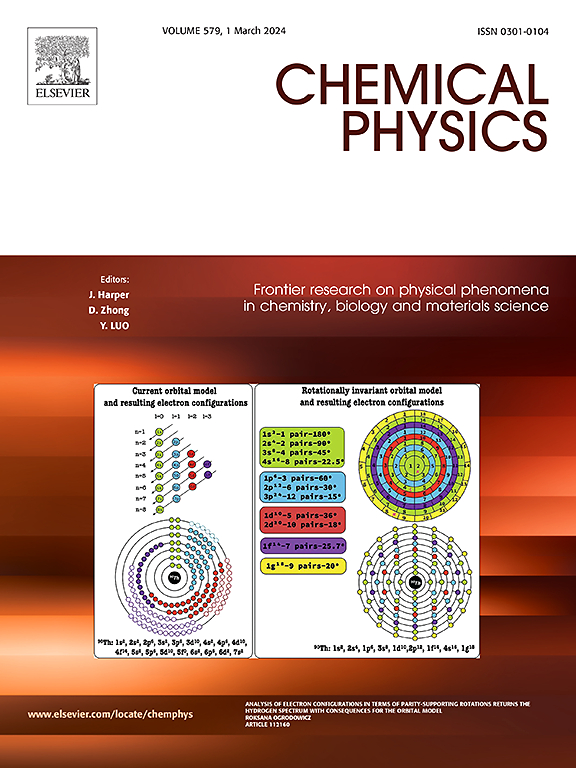Preparation of core–shell structured Cu2O@NH2-MIL-125(Ti) MOF and efficient photocatalytic degradation of methylene blue
IF 2
3区 化学
Q4 CHEMISTRY, PHYSICAL
引用次数: 0
Abstract
Cu2O has garnered increased interest due to its ideal band gap and excellent carrier separation efficiency for photo catalysis; nonetheless, charge recombination still causes instability in practical usage. Here we design and fabricate Truncated cube Cu2O(T C)@NH2-MIL-125(Ti) core–shell. The main bonds formed between NH2-MIL-125(Ti) and T C are through the ![]() N
N![]() Cu
Cu![]() N
N![]() ,
, ![]() N
N![]() O
O![]() Cu
Cu![]() bond and the Cu
bond and the Cu![]() O surface interaction in addition formed. The Truncated cube shape of Cu2O as a core and NH2-MIL-125(Ti) shell with limited recombination is seldom researched. The rate constant (K) for the photocatalytic methylene blue degradation of Cu2O(T C)@NH2-MIL-125(Ti) was 0.0182 min−1, 3.35 times higher than that of pure TC. The closely spaced band structures and close contact surfaces between T C and NH2-MIL-125(Ti) should be the origin of the core–shell’s increased photocatalytic activity, as they facilitate the efficient transfer and separation of the photo-generated charge carriers. Cu2+ proportion to Cu1+ after core–shell preparation is 45.66 %, which causes more oxygen vacancy and charge imbalances, increasing reactant adsorption and light absorption in the visible spectrum. The stability test towards MB employing T C@NH2-MIL-125(Ti) core–shell and the photocatalytic scavenger test have also been studied. Moreover, a Type-II heterojunction was produced by photo-generated electron transfer from T C to NH2-MIL-125(Ti). Such a heterostructure sheds light on Cu2O-related core–shell materials’ exceptionally effective recombination suppression and improved photocatalytic effectiveness.
O surface interaction in addition formed. The Truncated cube shape of Cu2O as a core and NH2-MIL-125(Ti) shell with limited recombination is seldom researched. The rate constant (K) for the photocatalytic methylene blue degradation of Cu2O(T C)@NH2-MIL-125(Ti) was 0.0182 min−1, 3.35 times higher than that of pure TC. The closely spaced band structures and close contact surfaces between T C and NH2-MIL-125(Ti) should be the origin of the core–shell’s increased photocatalytic activity, as they facilitate the efficient transfer and separation of the photo-generated charge carriers. Cu2+ proportion to Cu1+ after core–shell preparation is 45.66 %, which causes more oxygen vacancy and charge imbalances, increasing reactant adsorption and light absorption in the visible spectrum. The stability test towards MB employing T C@NH2-MIL-125(Ti) core–shell and the photocatalytic scavenger test have also been studied. Moreover, a Type-II heterojunction was produced by photo-generated electron transfer from T C to NH2-MIL-125(Ti). Such a heterostructure sheds light on Cu2O-related core–shell materials’ exceptionally effective recombination suppression and improved photocatalytic effectiveness.

求助全文
约1分钟内获得全文
求助全文
来源期刊

Chemical Physics
化学-物理:原子、分子和化学物理
CiteScore
4.60
自引率
4.30%
发文量
278
审稿时长
39 days
期刊介绍:
Chemical Physics publishes experimental and theoretical papers on all aspects of chemical physics. In this journal, experiments are related to theory, and in turn theoretical papers are related to present or future experiments. Subjects covered include: spectroscopy and molecular structure, interacting systems, relaxation phenomena, biological systems, materials, fundamental problems in molecular reactivity, molecular quantum theory and statistical mechanics. Computational chemistry studies of routine character are not appropriate for this journal.
 求助内容:
求助内容: 应助结果提醒方式:
应助结果提醒方式:


